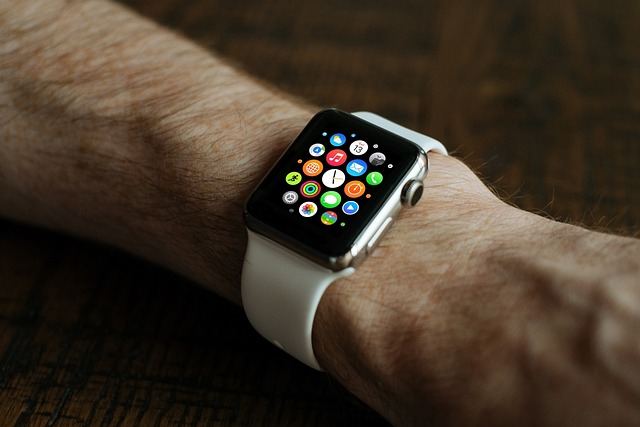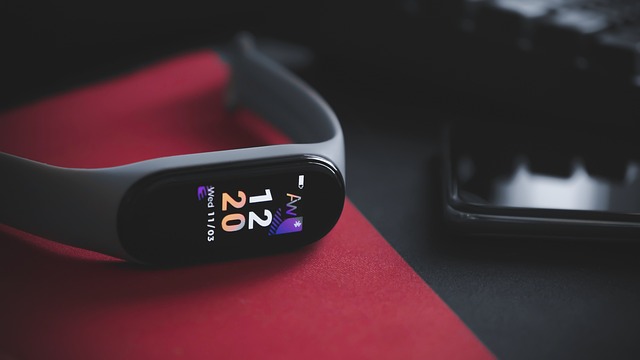The article emphasizes the importance of monitoring and replacing the Apple Watch battery to maintain its efficiency and ensure it functions effectively for health monitoring and connectivity. As batteries age, their performance can degrade, leading to shorter usage times and more frequent charging. Users should look out for warning signs such as consistent short battery life, frequent charging during light use, and low power notifications on the screen. Prompt battery replacement using genuine Apple parts by authorized service providers is key to restoring optimal performance and extending device lifespan. Addressing battery issues promptly prevents missing important notifications or experiencing sudden shutdowns. Regular battery monitoring and proactive replacements are crucial for the watch's endurance and accuracy in health tracking, communication, and smart functionalities. Physical changes like swelling or discoloration near the battery compartment also indicate it's time to replace the battery to ensure both device performance and user safety. To maintain peak Apple Watch performance, users should monitor battery life closely, update watchOS to aid battery health, and consider a replacement when necessary. Replacing the Apple Watch battery is essential for its longevity and functionality, ensuring it remains a reliable tool for daily use.
When your Apple Watch’s performance starts to wane, it may not always be a software issue. Over time, natural wear and tear can affect your device’s battery health. This article delves into the key indicators that signal it’s time to replace your Apple Watch battery, ensuring you maintain optimal functionality and longevity of your smartwatch. We’ll explore signs ranging from diminished battery life to technical glitches, guiding you through the process of making an informed decision based on your usage patterns and the device’s wear. Learn how to navigate these telltale signs and replace your Apple Watch battery with confidence.
- Understanding Your Apple Watch's Battery Life: Signs That Indicate Battery Replacement Needs
- Monitoring Performance: How Decreased Efficiency Can Signal Battery Woes
- Physical Symptoms: Identifying Visible Cues of Battery Aging and Failure in Your Apple Watch
- Technical Troubles: Common Issues Arising from a Deteriorating Apple Watch Battery
- When to Act: Deciding Whether It's Time to Replace Your Apple Watch Battery Based on Usage Patterns and Wear and Tear
Understanding Your Apple Watch's Battery Life: Signs That Indicate Battery Replacement Needs

Monitoring your Apple Watch’s battery performance is crucial for maintaining its functionality and ensuring optimal use. As the battery ages, it may no longer hold a charge as effectively as it once did. Typically, a fully charged battery should last up to 18 hours for typical use, which includes time checks, notifications, and workouts. If you notice that your Apple Watch is consistently running out of power within a significantly shorter time frame than usual, or if it’s no longer able to hold a charge as long as it used to, it might be an indication that it’s time to replace the battery. Another sign is if the battery requires charging more frequently, such as every few hours during light use. Additionally, if the Apple Watch displays a battery icon with an excuse me or low power warning on the screen, this is a definite signal that the battery’s capacity has degraded and a replacement would enhance your experience. It’s advisable to address these issues promptly to avoid missing important notifications or having your watch unexpectedly shut down. Replacing the Apple Watch battery through an authorized service provider or using genuine Apple parts can restore its performance and longevity, ensuring that your device continues to serve as a reliable companion for health monitoring and connectivity.
Monitoring Performance: How Decreased Efficiency Can Signal Battery Woes

As your Apple Watch becomes a daily fixture on your wrist, its performance can provide early indicators that it’s time to consider replacing the battery. One such sign is a noticeable decrease in efficiency. If you find that your Apple Watch is no longer holding a charge as it once did or requires frequent recharging, this could be an initial clue that the battery’s capacity is diminishing. The watch’s longevity on a single charge is often the first aspect to reveal subtle signs of aging in its battery. Additionally, if you’ve updated your Apple Watch to the latest software and notice that it drains faster than before, or if it fails to power up as quickly as expected, these are clear signals that the battery might not be as efficient as it should be. Such performance issues can stem from a degraded battery, which is common over time due to chemical changes within the cells. Replacing the Apple Watch battery can restore its original performance and ensure you have a reliable companion for health monitoring, communication, and other smartwatch functionalities. Regularly checking your Apple Watch’s performance and recognizing these subtle cues can help you decide when it’s time to replace the battery to maintain optimal usage.
Physical Symptoms: Identifying Visible Cues of Battery Aging and Failure in Your Apple Watch

When your Apple Watch starts to exhibit signs of battery aging or imminent failure, it’s a clear indication that a replacement might be necessary. One of the most apparent physical symptoms is an unusual decrease in battery life, even when your usage patterns remain consistent. If you notice that your Apple Watch is no longer holding a charge as long as it used to, or if you find yourself charging it more frequently than typically required, this could signal that the battery’s capacity is diminishing. Another visible cue is swelling or bulging around the battery compartment, which can occur due to battery degradation over time. This not only affects performance but also poses a risk to the device’s integrity and your safety. Discoloration of the battery casing, often appearing as dark spots or lines, can also be a sign that the battery is nearing its end of life. These changes are typically more pronounced after several years of use. To ensure optimal performance and avoid potential damage to your Apple Watch, it’s advisable to replace the battery if you observe any of these symptoms. Professional repair services can assess your device and provide a solution to replace your Apple Watch battery efficiently. Keep an eye on these tangible indicators as they are key in determining whether a battery replacement is in order for your Apple Watch.
Technical Troubles: Common Issues Arising from a Deteriorating Apple Watch Battery

As the performance of an Apple Watch battery wanes, several technical issues may arise, signaling that it might be time to consider a replacement. One of the most common indicators is inconsistent charging behavior; while some users might notice their Apple Watch charging more slowly or not holding a charge as long as it used to, others could experience unexpected shutdowns during use. These shutdowns are often a clear sign that the battery’s capacity has diminished significantly and that it can no longer supply the necessary power to your device. Additionally, if your Apple Watch’s clock becomes inaccurate or the date starts to drift, this too can be attributed to battery issues. The electronics within the Apple Watch rely on a healthy battery to maintain accurate timekeeping, and a degraded battery can cause time synchronization problems. Another issue that may emerge is screen behavior anomalies, such as the display dimming or going black before the battery is fully depleted. These are all symptoms of a battery in need of replacement. To address these issues effectively and ensure your Apple Watch operates at its best, it’s advisable to replace the battery at an authorized Apple service provider or by following Apple’s recommended procedures if opting for a DIY approach. Regularly updating your watchOS software can also help optimize battery performance until a replacement is necessary.
When to Act: Deciding Whether It's Time to Replace Your Apple Watch Battery Based on Usage Patterns and Wear and Tear

Monitoring your Apple Watch’s performance is key to maintaining its functionality and efficiency. Over time, the battery capacity of your Apple Watch may diminish due to natural wear and tear or heavy usage patterns. If you notice that your watch is no longer holding a charge as it once did, or if it requires frequent recharging throughout the day, it might be an opportune moment to consider replacing the battery. Regular use, particularly with features like heart rate monitoring, workout tracking, and notifications, can tax the battery over its lifespan. These features are resource-intensive and contribute to power consumption. It’s advisable to keep an eye on your watch’s battery performance, especially if you rely on it for health or fitness purposes. A significant decline in battery life can hinder these activities, making a battery replacement a practical solution to restore full functionality. Additionally, if your Apple Watch exhibits swelling, discoloration, or any physical signs of distress around the battery compartment, this is a clear indication that a replacement is necessary. Prioritizing battery health not only extends the life of your device but also ensures that it remains a reliable companion for all your daily activities.
When your Apple Watch’s endurance begins to wane, it’s a clear indication that replacing its battery could restore both its performance and longevity. Regular monitoring of battery life, coupled with awareness of physical signs such as swelling or discoloration, is crucial for timely intervention. Technical glitches like unresponsive touch screen or erratic heart rate readings often accompany battery degradation. Assessing your usage patterns and the visible wear and tear on your device can guide you in making an informed decision about when to replace your Apple Watch battery. Ultimately, ensuring your watch operates at its best hinges on recognizing these subtle cues early on, which can significantly enhance your overall experience with this indispensable tech companion.
